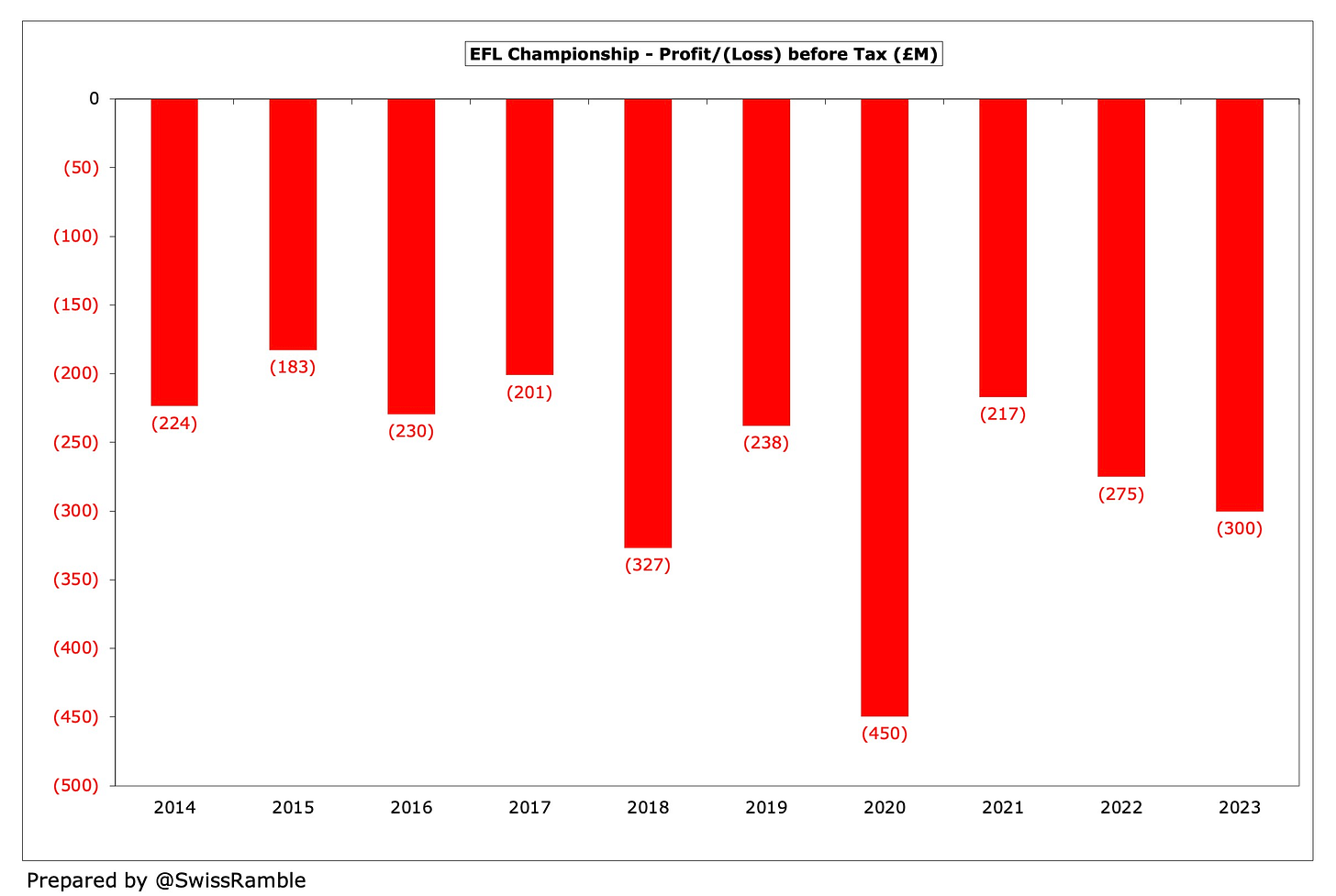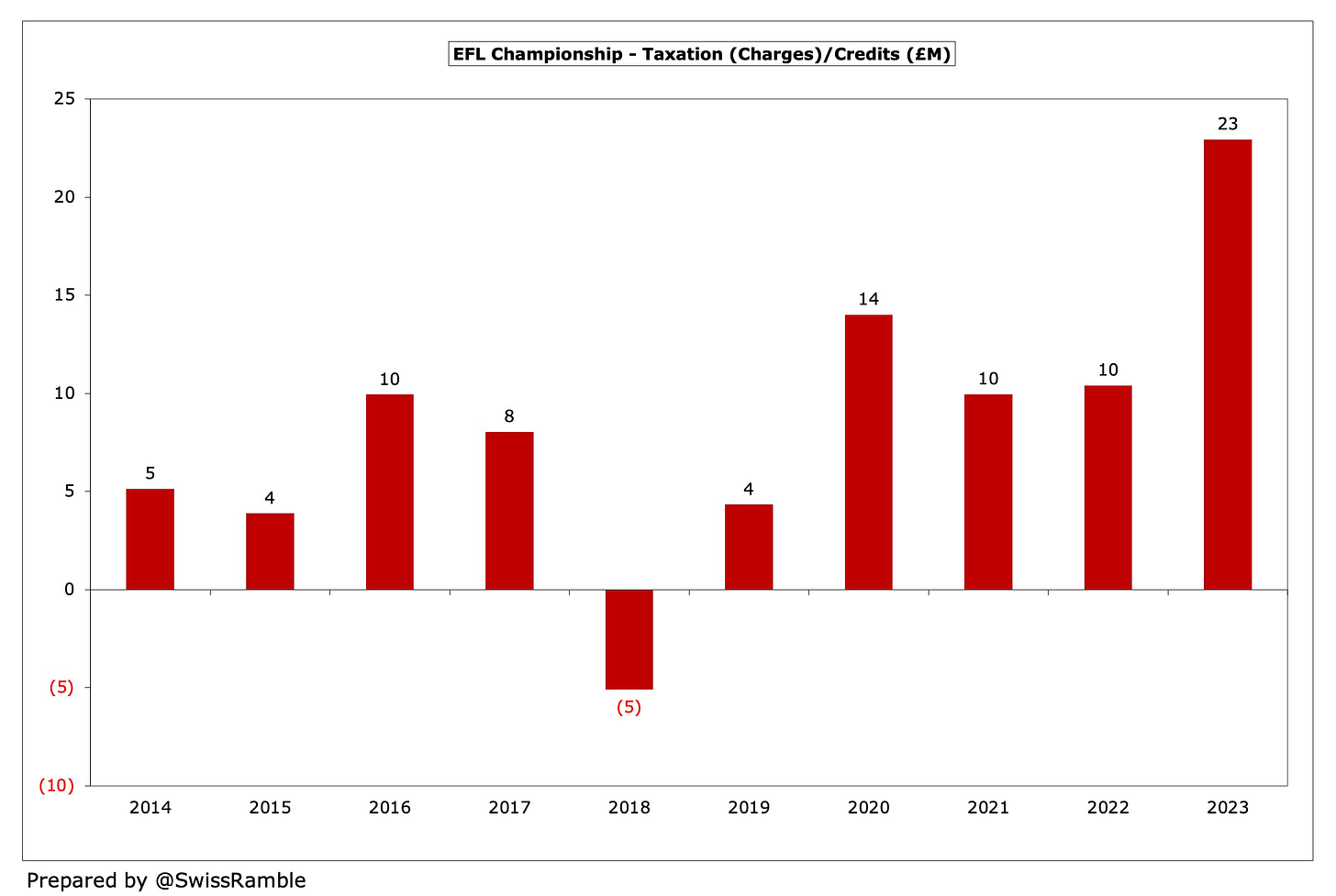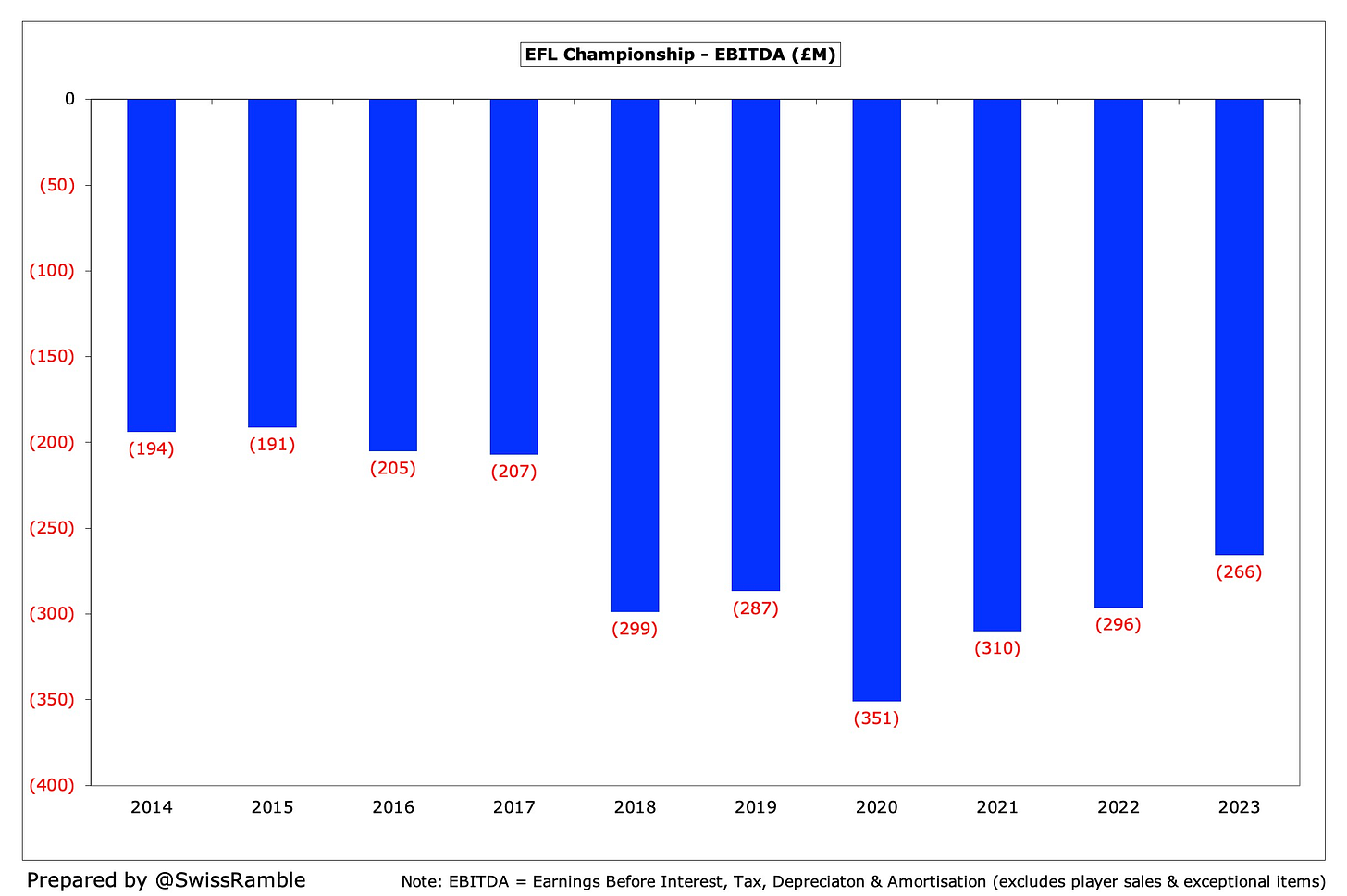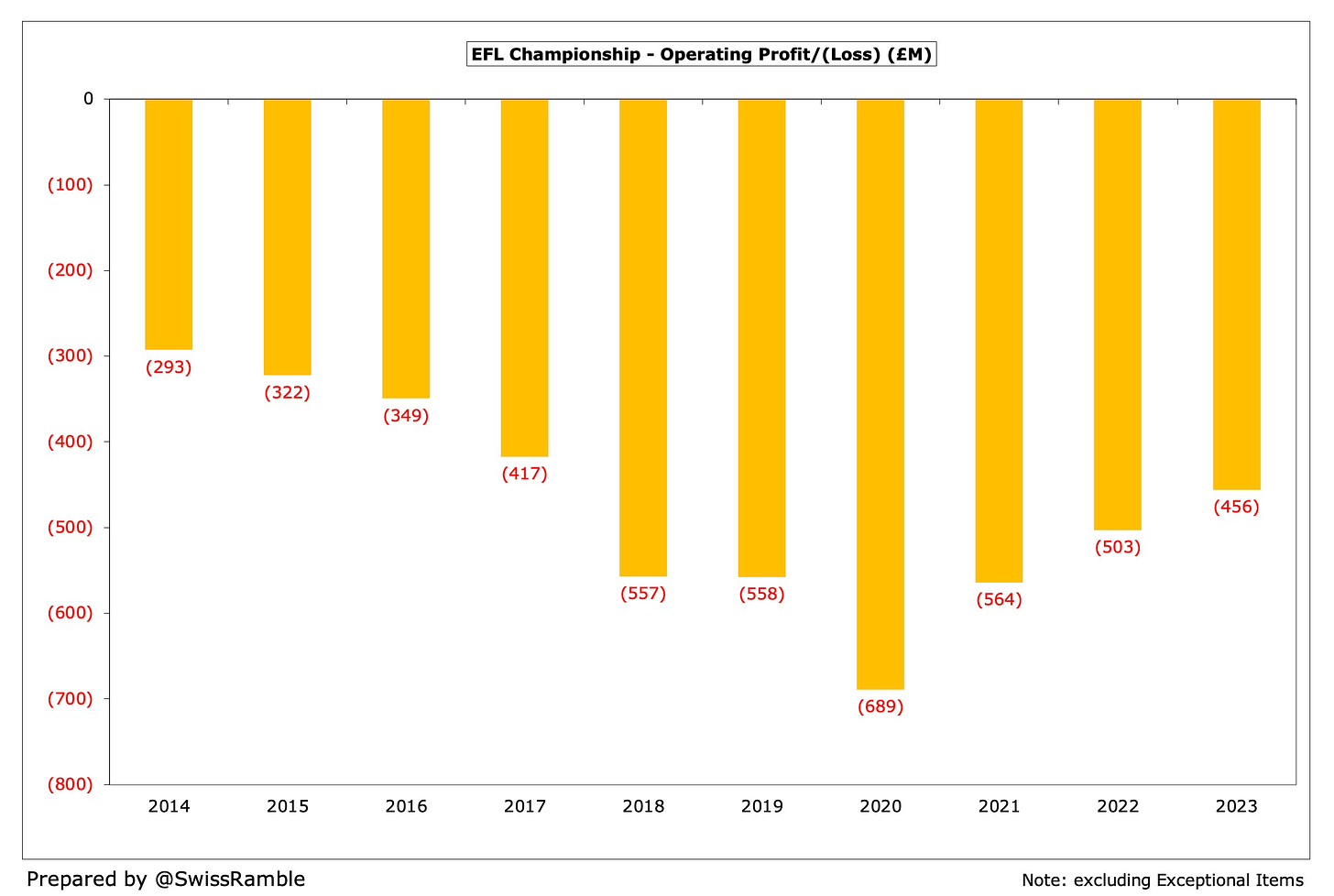After I recently looked at the trends in the Premier League over the last 10 years, a few people asked me if I could do the same for the EFL Championship.
So here are the finances for England’s second tier between 2013/14 and 2022/23, the last season when clubs have published accounts.
As with the top flight, the figures for 2019/20 and especially 2020/21, when virtually all games were played behind closed doors, were significantly impacted by the COVID pandemic, but it’s been pretty much business as usual in the last two seasons.
Caveats
This analysis comes with a couple of health warnings, as not all Championship clubs have published accounts in the last decade, either because they were in administration or due to other financial issues. As a result, the analysis is missing the following figures:
Bolton Wanderers – 2017/18 and 2018/19
Derby County – 2018/19, 2019/20, 2020/21 and 2021/22
Reading – 2022/23
Wigan Athletic – 2019/20
Furthermore, a couple of clubs only published abbreviated accounts, which means that not all the usual details, such as the split of revenue into the various streams, are available:
Yeovil Town – 2013/14
Wycombe Wanderers – 2020/21
Nevertheless, we should still be able to identify the major themes and trends.
Profit/(Loss)
The Championship loss before tax has actually widened since fans returned to the stadium, rising from £217m in 2020/21 to £300m in 2022/23.
Looking at the last decade, it is clear that this division bleeds money with total losses of £2.6 bln, including £1.5 bln in last five years alone.
The annus horribilis in 2019/20, when the Championship lost a horrific £450m was obviously impacted by COVID, featuring huge losses at five clubs: Stoke City £88m, Leeds United £62m, Fulham £48m, Reading £42m and Middlesbrough £36m.
Tax does not have that big an impact on the bottom line for football clubs, which has certainly been the case in the Championship. That said, there are normally small credits, due to the reported losses. In fact, the £23m tax credit in 2022/23 was the highest for many years.
As a result, the picture for losses in the Championship is much the same after tax, though the net loss was a little smaller in 2022/23 at £277m.
EBITDA
EBITDA (Earnings Before Interest, Depreciation and Amortisation), which strips out player sales, non-cash items and interest to give a measure of underlying profitability, has been consistently negative in the Championship.
On the plus side, this has improved three years in a row from minus £351m to minus £266m, but this was still a lot worse than the results in the years up to 2016/17, which averaged around minus £200m.
Operating Profit/(Loss)
The situation is even worse at an operating level, i.e. including player amortisation and depreciation, but excluding player sales and interest.
Although operating losses have also reduced since 2019/20, the Championship still lost a hefty £456m in 2022/23, i.e. an average of £20m per club. The largest deficits were reported by Burnley £41m and Sheffield United £32m, though in fairness these included substantial promotion bonuses.
To highlight the overall deterioration, operating losses were £2.8 bln in the last five years, compared to “only” £1.9 bln in the preceding 5-year period. Put another way, this was equivalent to £4.7 bln in the last decade, which is not exactly small change.
Profit from Player Sales
Of course, many football clubs aim to offset operating losses with player trading, but there is little sign of any comfort here, as profits from player sales have fallen off a cliff in the Championship, decreasing from the record £322m in 2020/21 to just £113m in 2021/22 and £181m in 2022/23.
Keep reading with a 7-day free trial
Subscribe to The Swiss Ramble to keep reading this post and get 7 days of free access to the full post archives.









